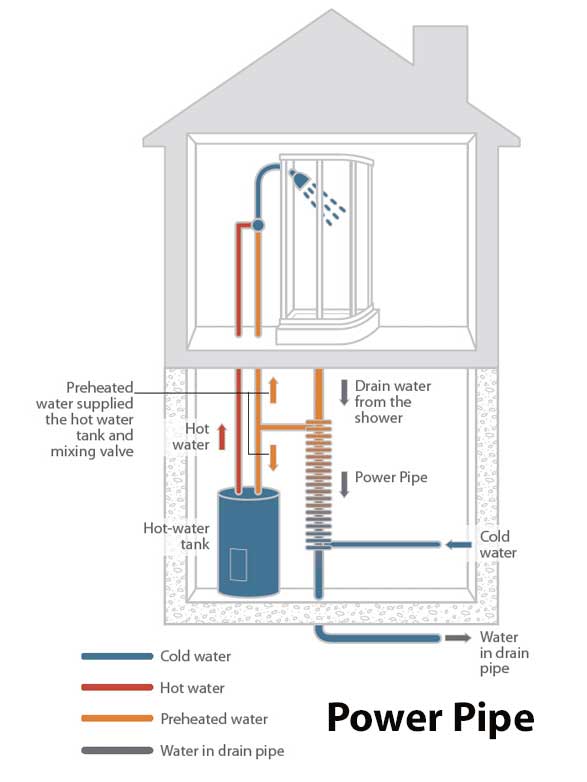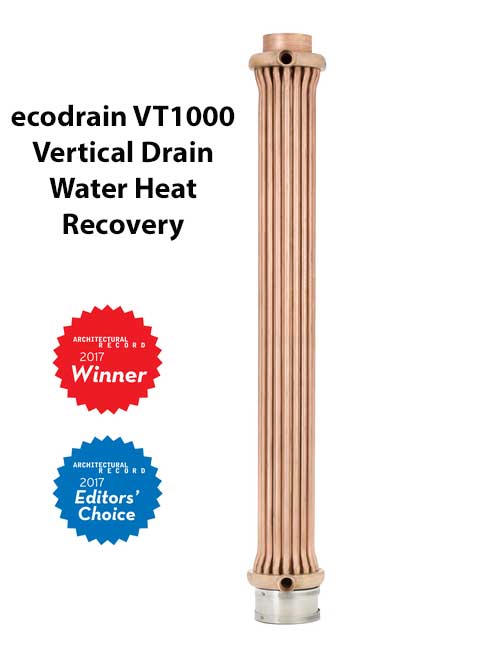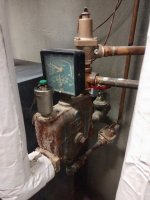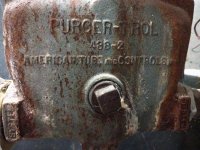Reicherb
Member
I used the formulas at https://www.greenbuildingadvisor.com/article/out-with-the-old-in-with-the-new to determine my BTU load. My math is below. Can you please help me make sure I'm correct?
Meter Read on 1/4/2019 7695
Meter Read on 2/4/2019 7918
Difference 223
Energy Use 1/4/2019-2/4/2019 22.3 Mcf Natural Gas
Energy Use 1/4/2019-2/4/2019 227.46 Therm
Furnace efficency 80%
99% outside design temperature 3
Sum 65 Degree Days 1374.9
Sum 60 Degree Days 1219.9
Heat Delivered (227.46therm x 80%) in Therms 181.968
Convert to BTU 18196800
Convert to MMBTU 18.1968
65 degree BTU/Degree Day (18.1968 MMBTU / 1374.9 * 1000000) 13234.99891
65 degree BTU/Hr (divided by 24 hours) 551.4582879
60 degree BTU/Degree Day (18.1968 MMBTU / 1374.9 * 1000000) 14916.63251
60 degree BTU/Hr (divided by 24 hours) 621.5263546
Heat Load at 65 in BTU/Hr ((65-3)*551)) 34162
Heat Load at 60 in BTU/Hr ((60-3)*621)) 35397
Sizing Factor 1.4
Size Needed at 65 degrees 47826.8
Size Needed at 60 degrees 49555.8
I live in central Michigan. I have 3 zones that consist of:
Zone 1:
Semi finished basement
836 square feet
Family Area - 11' of baseboard registers
Scrapbook Room - 5' of baseboard registers
Laundry Room - 8' of baseboard registers
Zone 2:
1st Floor
836 square feet over basement and 140 square foot on a slab
Bathroom - 5' of baseboard registers
Mud Room - 6' of baseboard registers
Kitchen - 0' of baseboard registers
Dining Room - 8' of baseboard registers
Play Room - 21' of baseboard registers
Living Room - 12' of baseboard registers
Hallway - 6' of baseboard registers
Zone 3:
2nd Floor
836 square feet
Bathroom - 5' of baseboard registers
Master bedroom - 25' of baseboard registers
Bedroom 2 - 20' of baseboard registers
Bedroom 3 - 20' of baseboard registers
Office - 10' of baseboard registers
I'm looking to go with a combi unit for heat and domestic hot water. Is 50,000BTU the right size?
Thanks!
Meter Read on 1/4/2019 7695
Meter Read on 2/4/2019 7918
Difference 223
Energy Use 1/4/2019-2/4/2019 22.3 Mcf Natural Gas
Energy Use 1/4/2019-2/4/2019 227.46 Therm
Furnace efficency 80%
99% outside design temperature 3
Sum 65 Degree Days 1374.9
Sum 60 Degree Days 1219.9
Heat Delivered (227.46therm x 80%) in Therms 181.968
Convert to BTU 18196800
Convert to MMBTU 18.1968
65 degree BTU/Degree Day (18.1968 MMBTU / 1374.9 * 1000000) 13234.99891
65 degree BTU/Hr (divided by 24 hours) 551.4582879
60 degree BTU/Degree Day (18.1968 MMBTU / 1374.9 * 1000000) 14916.63251
60 degree BTU/Hr (divided by 24 hours) 621.5263546
Heat Load at 65 in BTU/Hr ((65-3)*551)) 34162
Heat Load at 60 in BTU/Hr ((60-3)*621)) 35397
Sizing Factor 1.4
Size Needed at 65 degrees 47826.8
Size Needed at 60 degrees 49555.8
I live in central Michigan. I have 3 zones that consist of:
Zone 1:
Semi finished basement
836 square feet
Family Area - 11' of baseboard registers
Scrapbook Room - 5' of baseboard registers
Laundry Room - 8' of baseboard registers
Zone 2:
1st Floor
836 square feet over basement and 140 square foot on a slab
Bathroom - 5' of baseboard registers
Mud Room - 6' of baseboard registers
Kitchen - 0' of baseboard registers
Dining Room - 8' of baseboard registers
Play Room - 21' of baseboard registers
Living Room - 12' of baseboard registers
Hallway - 6' of baseboard registers
Zone 3:
2nd Floor
836 square feet
Bathroom - 5' of baseboard registers
Master bedroom - 25' of baseboard registers
Bedroom 2 - 20' of baseboard registers
Bedroom 3 - 20' of baseboard registers
Office - 10' of baseboard registers
I'm looking to go with a combi unit for heat and domestic hot water. Is 50,000BTU the right size?
Thanks!




